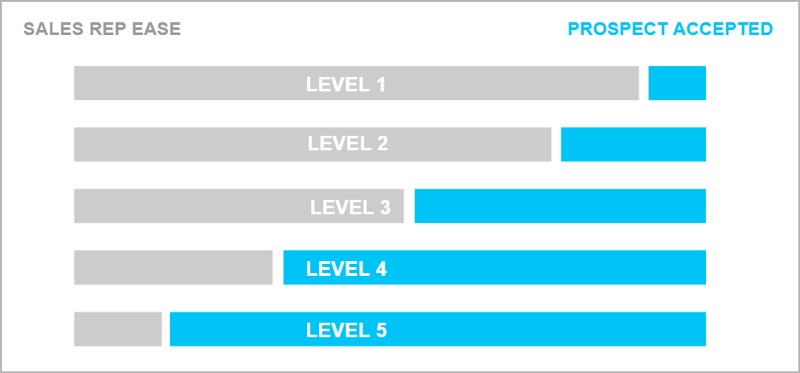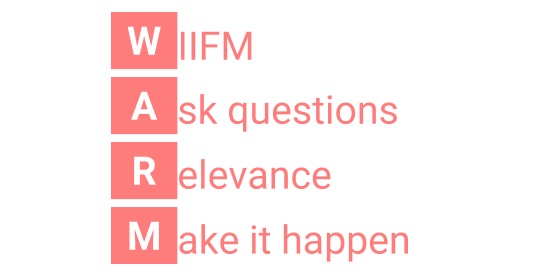There is a huge amount of debate about the best approach for reaching out to people when you are prospecting…
The old school sales approach is to grab the phone book, and simply cold sale call everyone, starting from A and ending with Z.
Then this recent wave of new age folk who are advocating social selling are nullifying the need to even touch a phone.
And then, of course, there’s a bunch of people who are stuck between the two.
So what is the best way to approach outbound sales calls and prospecting in 2017? How do you actually start a conversation?
Before we talk tactics, let’s take a look at the psychology of the people you are trying to engage in the first place.
The state of outbound sales calls
Take a moment to think about the last time you were called by a sales rep…
For me, it was last night at about 7:30pm. I was eating dinner and I got a cold call from an electricity company. They called up with the offer of a slightly better plan than I am currently on.
This call interrupted my dinner and the great conversation I was having with my wife at the time. It probably won’t surprise you that this resulted in a genuinely horrible experience for me, my wife and a terrible outcome for the caller.
It’s not just me who feels like this. We all are immediately turned off and disengage from a conversation when we get interrupted with a “sales pitch” that is not valuable to the recipient.
But why is that?
The reality is people don’t want to be sold. Today we operate in a buyer’s environment, where people want to come to their own conclusions. They are becoming aware of their own problems, not being told about them, and then they are starting to look for solutions.
They want to be helped, but only when they are ready.
We operate in a buyer’s environment, where people want to come to their own conclusions.
What this means for outbound sales calls
Should we just stop making sales calls all together then?
The short answer is no, but it’s complicated…
Outbound sales calls are still an extremely effective way of helping prospects overcome their challenges and get closer to a purchase decision, but let’s take a closer look at the environment.
Not all prospecting calls are created equal. In fact there are 5 levels of outbound calls, all of which offer varying opportunities to be accepted by the customer and also take more effort from the sales rep.

Level 1 — The cold call
At this level you have pretty much been given a list of names, a phone, and a sales pitch. In a similar way to my electricity company experience, you are then calling people with the goal of pitching them as soon as possible. Yet, they know nothing except your name when you pick up the phone.
Level 2 — Armed with problem information
At level two, on top of having the pitch, the phone number, and your phone, you also have a little bit of research about the problem your business can solve for the person you are calling. It’s better, but still not where you want to be hunting.
Level 3 — They have taken an action
In this case you are calling someone in response to an action they have taken that in some way indicates that they are ready for a call. For example, they may have downloaded a document online such as an eBook or a white paper.
These outbound calls show that there is at least some level of interest, but are very different to someone requesting a quote or submitting a contact form. In those instances, the call becomes very much an “inbound” enquiry.
Level 4 — Relevance is established
The concept of relevance refers to calling someone at the right moment, when you have identified a key point of activity that tells you that you can impact their business almost immediately. This relevance may be based on a contact’s behaviour on your website, in an email sequence, or based on a pattern of lead scoring.
Level 5 — They’ve had a previous engagement
Level 5 is the ultimate level of outbound sales calling, because it is based on your prospect reaching out to you and your business. Perhaps they’ve requested a call on your website, downloaded some of your content, requested a trial or asked for pricing. Basically they have raised their hand and are keen to chat.
So when it comes to outbound sales calls; level one, which is calling without identifying someone’s problem, without having any relevance, and without them indicating any interest in your business, that’s a pure cold call. Without a doubt that form of prospecting is dead. Forbidden. Totally ineffective.
But from level two to level five CAN be effective methods of filling your sales pipeline, and could well still make up an integral part of your sales arsenal.
WARM calling — the new approach to outbound sales calls
The key to using these levels of outbound sales calls to your advantage is to create what is called a WARM call.

W: Address the customer’s confusion with three questions
The “W” in this acronym is all about addressing the customer’s confusion. You do that by answering three important questions, that they are most likely thinking, as soon as possible on the call:
- Who are you?
- Why are you calling me?
- What’s in it for me? (WIIFM)
A: Ask questions, instead of pitching
When you are making a warm outbound call it’s not the time to pitch about your product or service. Instead you want to be asking questions, and ask questions with context. The context proves that you’ve done your research.
For example, you may say something like “I noticed on LinkedIn that you are the Regional Vice President of Marketing at Acme Incorporated. Did I get that right?” Something as simple as this proves that you’ve done your research, and that the conversation is going to be relevant to that individual.
R: Establish relevance
You need to ensure that the ensuing questions are absolutely relevant to the prospect. These days there is no excuse for asking irrelevant or out of context questions. There is a wealth of information available online about 1) the people that you’re speaking to, 2) the company they work for, and 3) the industry that they are in. By researching these three elements, you’re going to be able to identify certain facts that will enable you to be relevant in each of your conversations.
M: Make it happen for the customer
At this point you are trying to provide some value to the person you are speaking to, ensuring that you are making their life easier. In the Regional Vice President of Marketing example, you may offer to provide some insight or information into how some of their competitors have entered certain markets, or share a case study about how others have been successful, or invite them to a webinar. You really need to think about what is important and will add value for them and invite them to engage with you further.
Remember the aim of this initial engagement is to start a dialogue.
Wrapping up
When looking at how you call your customers, you need to take into account your regional, industry and personal realities.
If you are trying to cold call into New Zealand, people are happy to have a chat. Similarly if you are calling family businesses in middle America, they will gladly chat to a cold caller. If you follow the same tactics in Germany, it is downright illegal!
If you adopt these WARM outbound calling principles with calls from level two to level five, you will significantly impact your prospecting activity and ensure you are genuinely having relevant conversations more often.
By being relevant, you are not going to be calling anyone when they’re sitting down at dinner at 7:30pm and interrupting them with a sales pitch!
Instead you’ll adopt a customer-centric approach to selling. An approach that thinks about their problems, and asks questions that are relevant to those problems. An approach that provides them insights for being more successful in their role. An approach that inevitably delivers you better conversations and more sales.

